- Home
- Newt Gingrich
Understanding Trump Page 3
Understanding Trump Read online
Page 3
What the Left—and apparently, the entire Washington press corps—didn’t know is that Minneapolis television covers central Wisconsin. Trump got all the coverage of central Wisconsin without putting Wisconsin on the Democrats’ radar. So it was the smaller, less expensive, practical Trump team that figured out how to get the keys to the American political system.
A FATHER FIRST
The best proof of Donald Trump’s character and the best indicator of his many achievements can be found in the success of his children.
President Trump’s children, all of whom are incredibly bright and accomplished, have a deep gratitude to their father for his attention, his guidance, his confidence in them, and the decisive role he played in educating them.
Every time I have seen President Trump with his children, I have been impressed with how much he cares for them and how proud he is of their accomplishments.
Trump beamed with pride when he introduced his son Eric at the grand opening of his newly renovated Trump Turnberry golf resort in Scotland. It was clear this was Eric’s project and achievement.
A few years ago, Callista and I talked with Trump about the great job he had done with the Trump Winery (the largest in Virginia) and Albemarle Estate, a luxury hotel at the winery outside Charlottesville. Trump promptly said, “That’s Eric’s job. He has been responsible for the entire project, and I think he has done really well!”
We were with the Trumps when they opened the new Trump International Hotel in Washington, DC. Donald Trump was glowing with pride about the job Ivanka had done. Anyone who’s seen the Old Post Office knows that Ivanka developed a remarkably beautiful, world-class hotel.
Her father emphasized that not only did Ivanka design and implement a beautiful renovation of an old building, but she also brought it in ahead of schedule and under budget. Those are the two key characteristics that define the Trump family. They want to do things beautifully, but they also want to do them in a prudent way.
When I went out to Indianapolis to meet with then-candidate Trump about possibly becoming his vice president, he had Don Jr., Ivanka, and Eric in the room. We had an incredibly candid conversation, and it was interesting to me how much they were part of the discussion.
As I flew back home with the three of them, they generously allowed me to look at the drafts of their speeches for the GOP National Convention in Cleveland. Each was extremely personal and well done.
Don Jr., in particular, grew up working throughout the Trump Organization, learning every level of the operation. Don Jr. and Eric have their father’s complete trust and are now running a worldwide business empire on their own.
At the convention, Don Jr. said that his father has a profound ability to find the best in people and push them to excel:
He’s recognized the talent and the drive that all Americans have. He’s promoted people based on their character, their street smarts, and their work ethic, not simply paper or credentials. To this day, many of the top executives in our company are individuals that started out in positions that were blue-collar, but he saw something in them and he pushed them to succeed.… I know he values those workers and those qualities in people because those are the individuals he had my siblings and me work under when we started out. That he would trust his own children’s formative years to these men and women says all you need to know about Donald Trump.
Ivanka recalled making buildings with Legos on the floor of her father’s office, while he “did the same with concrete steel and glass.”
Like her eldest brother, Ivanka spoke of her father’s uncanny ability to find potential in people and help them turn it into greatness. But she also shared how her father had imparted his values and willingness to dream big to his children:
My father taught my siblings and me the importance of positive values and a strong ethical compass. He showed us how to be resilient, how to deal with challenges, and how to strive for excellence in all that we do. He taught us that there’s nothing that we cannot accomplish, if we marry vision and passion with an enduring work ethic.
Eric, who spoke at the convention just before Callista and I did, highlighted philanthropy as the most profound virtue his father had bestowed on him:
I want to thank my father over there for the life that he’s provided me, for the life that he’s provided my family, and the life that he’s provided all of our employees around the world. I want to thank my father for the life that he’s enabled me to provide for my future children as my beautiful wife, Lara, and I start thinking about that amazing chapter of our lives.
To that end, I often think about the legacy I wish to leave my children, and to me, there are few things that I hold closer to my heart than charity.… Dad, you have once again taught us by example, you are my hero, you are my best friend, you are the next president of the United States.
Finally, his younger daughter, Tiffany, spoke in what was a heartfelt description of her father’s impact on her life:
For me, the measure of a parent is based on how they support and bolster you when you’re down. A few years ago, someone very dear to me passed away, and the first call I got, as I knew I would, came from my father.
Without his unwavering support and care for me during such a challenging time, I don’t know how I would have made it through. As far too many know, it is the small, loving acts that help an enormous amount in times of grief.
In 2016 Barron was too young to give a speech, but I have a hunch we will hear from him during the 2020 convention.
So, if we look to his children as a barometer for the Trump presidency, we will find a president who will use the federal government to accomplish great things. President Trump will be guided by his morals and work ethic; he will promote success and charity in equal measure; and he will treat America with “unwavering support and care” during difficult times.
This is an impressive description of a father who loves his children and his country.
TRUMP DOESN’T JUST UNDERSTAND THE MEDIA, HE MASTERS IT
Trump got one of his first lessons in how the media could help him in 1980 when he was demolishing the Bonwit Teller building to construct Trump Tower at Fifty-Seventh Street and Fifth Avenue.
In The Art of the Deal, he describes the process of demolishing the building, which had two large Art Deco bas-relief friezes. He had told the Metropolitan Museum of Art that he would donate the friezes if they could be saved, but after his contractors told him removal would cost hundreds of thousands of dollars, he decided to break them up.
The next day, the New York Times ran a front-page photo of the sculptures being demolished. Trump wrote that he had immediately become “a symbol of everything evil about modern developers.” More bad press followed, but Trump recognized something:
The stories that appeared about it invariably started with sentences like: ‘In order to make way for one of the world’s most luxurious buildings…’ Even though the publicity was almost entirely negative, there was a great deal of it, and that drew a tremendous amount of attention to Trump Tower. Almost immediately we saw an upsurge in the sales of apartments. I’m not saying it’s a good thing, and in truth it probably says something perverse about the culture we live in. But I’m a businessman, and I learned a lesson from that experience: good publicity is preferable to bad, but from a bottom-line perspective, bad publicity is sometimes better than no publicity at all. Controversy, in short, sells.
This background of wrestling in the New York media market primed him for politics.
The political media was flummoxed by Trump. They had no idea how to cover him—but he understood the media perfectly. He has used the media more effectively than any president in modern history—maybe since Abraham Lincoln.
He knew from more than a dozen years of producing The Apprentice that the media needs content. Papers must fill pages daily, cable news needs material hourly, Web-based news outlets need content by the minute.
So, what was a perfect day for Trump on the campai
gn? It was not meeting with consultants, raising money, or filming ads.
He would wake up and tweet—speaking directly to millions of his supporters. That would kick off the news day across the country. Then he would watch Morning Joe and call in and argue over what he tweeted. Then he would call in to Fox & Friends and calmly explain what he meant by the tweet. By the time he finished his 10:00 a.m. press conference—which was covered by the major media—he had saturated the news cycle all morning and set the tone for the day’s news. Later that day, he would hold a twenty-thousand-person rally followed by an hour-long spot on Sean Hannity that evening.
It was routine for Trump to get millions of dollars’ worth of free media attention without spending a penny. His primary opponents were drowning in his coverage. Most often, they only got attention by responding to something Trump said or did. This strategy worked through the general election—I’ve never seen anything like it in American politics. Hillary Clinton would speak at an event, and none of the major networks would go cover it, because they knew viewers would immediately switch over to see the next thing Trump did or said.
Meanwhile, the elite political press was reporting that Trump wasn’t raising enough cash to be competitive.
AN UNSTOPPABLE WILL TO WIN
Even under intense opposition, and against apparently low odds, President Trump has an incredible will to win. I have seen it firsthand.
In mid-October 2016—just three weeks before election day—all the polls were bad. The decade-old Inside Hollywood tape with Trump using vulgar language had been exploited to the fullest by the elite media, and virtually everyone in the Trump campaign was jittery and frightened. I called Trump to discuss effective counterpunches, and he told me, “Just remember, I win. I always win. I am not quite sure how, but by election day we will be winning.” It was a vivid reminder that this man had fought for every inch of his success in life, and he succeeded through seemingly impossible situations before.
Before he moved to Manhattan after college, he and his father had just made a $6 million profit on a large property they’d refurbished and sold in Cincinnati, Ohio. By all measures, the family business in Queens and Brooklyn was doing very well. But Trump still wanted more.
Despite Manhattan being much more expensive, Trump knew if he was going to find the type of success he craved, he would need to be where the action was.
In The Art of the Deal, Trump describes moving into a “dark, dingy little apartment” in Manhattan with a view of a water tank as being more exciting to him than moving into the top of Trump Tower with a view of Central Park fifteen years later.
“You have to understand; I was a kid from Queens who worked in Brooklyn, and suddenly I had an apartment on the Upper East Side,” he wrote.
DREAM BIG, ACHIEVE BIG
The last main point to remember about Trump is that he believes in aiming high and accomplishing what others say is impossible.
Consider the vision he described during his first address to a joint session of Congress. President Trump set a high bar for America to meet by the time we celebrate our country’s 250th anniversary in 2026:
Think of the marvels we can achieve if we simply set free the dreams of our people. Cures to the illnesses that have always plagued us are not too much to hope. American footprints on distant worlds are not too big a dream. Millions lifted from welfare to work is not too much to expect. And streets where mothers are safe from fear, schools where children learn in peace, and jobs where Americans prosper and grow are not too much to ask.
When we have all of this, we will have made America greater than ever before—for all Americans. This is our vision. This is our mission. But we can only get there together. We are one people, with one destiny. We all bleed the same blood. We all salute the same great American flag. And we all are made by the same God.
When we fulfill this vision, when we celebrate our two hundred and fifty years of glorious freedom, we will look back on tonight as when this new chapter of American greatness began. The time for small thinking is over. The time for trivial fights is behind us. We just need the courage to share the dreams that fill our hearts, the bravery to express the hopes that stir our souls, and the confidence to turn those hopes and those dreams into action.
Those who doubt that Americans can cure difficult diseases, put astronauts on other planets, or solve the problems in our welfare system in the next decade should remember that at one time, the Donald Trump presidency was regarded as impossible. In fact, from real estate to television to politics, Trump has been achieving impossible goals his entire adult life.
Given his track record, I am confident that America—with President Trump’s leadership—can accomplish all those things and more.
I watched then-candidate Trump as he would shift with amazing speed. He could be flying to a rally with more than twenty thousand people, suddenly see a fact or a story and get Stephen Miller, an unsung hero of the Trump campaign, to add it to the speech as they moved toward the stadium. One of the keys to the campaign was Miller sitting at a table about ten feet behind Trump and banging away on the next speech or press release as they flew around the country. Understanding Trump requires understanding the principles by which he could shift so quickly from topic to topic.
CHAPTER TWO
THE FOUR-SIDED TABLE
One of the main reasons why the news media, pundits, and the political establishment fail to understand Donald Trump is that his philosophy does not fit into the normal conservative-liberal divide that has characterized American politics for the last twenty years.1
On issues like trade, foreign policy, Social Security, and Medicare, Trump has staked out positions that are at odds with decades of Republican Party establishment dogma.
One moment from the campaign sticks out to me as an example of just how different Trump is from the Republican Party of the last two decades. It was during the February 13, 2016, debate in South Carolina. Throughout the campaign, Trump had distinguished himself as a fierce critic of the Iraq War. This position may have helped him in New Hampshire, where he had just comfortably won the primary. But South Carolina is a much more conservative Republican state. There is a large military presence in the state, and George W. Bush is still very popular there. So, Trump’s criticism of the former president could have been a liability. Nevertheless, during the debate, Trump criticized the Iraq War and former President Bush’s leadership with as much force and clarity as he ever had before.
The next day, I called Trump and asked him why he would go out of his way to attack the former president in a state where George W. Bush was so popular. “The war was a mistake,” Trump responded calmly. “Someone has to say it, and I don’t care if I lose because of it.”
I tell this story because Trump is often accused by the clueless news media of taking opportunistic positions. In fact, Donald J. Trump has a very clear set of guiding principles that informs the positions he takes and the way he governs as president.
These principles are best illustrated by imagining a four-sided table. One side of the table is anti-Left, one is anti-stupid, one is anti–political correctness, and the fourth is pro-American.
No matter what action Trump takes, you can be sure that it falls somewhere on the table.
ANTI-LEFT
Donald Trump is not a typical conservative. He does not approach governance through a matrix of smaller government versus bigger government or traditional values versus postmodernist values.
He is, however, emphatically anti-Left in his worldview, which naturally leads him to many conservative positions.
This outlook is not just political. Trump’s entire life has been a pointed rejection of left-wing values.
The Left doesn’t believe wealth is earned and views the existence of rich and poor people as evidence of America’s moral failings. Trump, meanwhile, flaunts his wealth both as a measure of personal achievement and as a celebration of the greatness of America.
Trump made his mone
y by developing real estate that caters to the ultrawealthy, and then moved into marketing books, clothing, and a television show based around his reputation for getting rich. His entire life has been dedicated to spreading an anti-Left worldview that being rich is good, success is earned, and that anyone who works hard enough can be wealthy.
This outlook toward life informs his politics and public policy.
Trump’s “America First” approach to foreign policy is a rejection of the left-wing philosophy that assumes that because America is wealthy and powerful, it must be the villain.
Trump is for lower taxes because like most hard-working people, he viscerally rejects the American Left’s anti-wealth, anti–individual achievement worldview.
And while Trump publicly embraced his Christianity late in life, he instinctually understands that he must fight against the Left’s desire to destroy religion’s vital role in American civic culture. That is why so many evangelical leaders embraced him early in the primaries, despite his history of divorce and more liberal social views. They saw him as an anti-Left warrior.
DRAIN THE SWAMP
Most vital to Trump’s anti-Left positioning is his promise to “drain the swamp.” A common trait of all left-wing movements throughout history has been the desire to empower an enlightened ruling class to make decisions on behalf of the people for their own good. It is believed by the Left that an educated, trained elite can make better decisions than the combined wisdom of the masses.

 1945
1945 Collusion
Collusion Trump's America
Trump's America Shakedown
Shakedown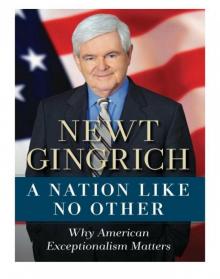 A Nation Like No Other
A Nation Like No Other To Try Men's Souls - George Washington 1
To Try Men's Souls - George Washington 1 Pearl Harbor: A Novel of December 8th
Pearl Harbor: A Novel of December 8th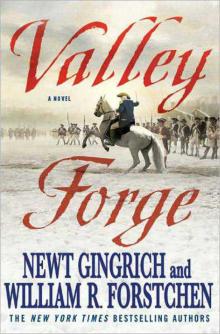 Valley Forge: George Washington and the Crucible of Victory
Valley Forge: George Washington and the Crucible of Victory To Save America
To Save America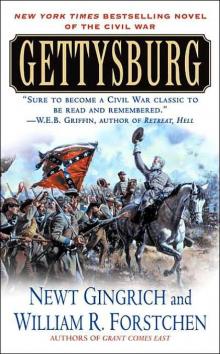 Grant Comes East cw-2
Grant Comes East cw-2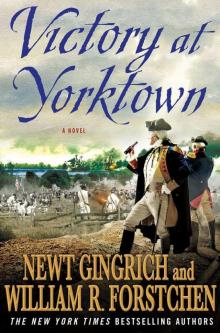 Victory at Yorktown: A Novel
Victory at Yorktown: A Novel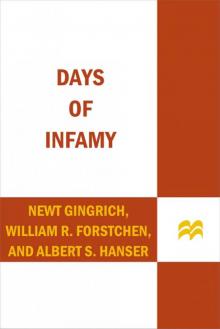 Days of Infamy
Days of Infamy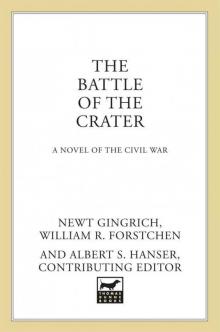 The Battle of the Crater: A Novel (George Washington Series)
The Battle of the Crater: A Novel (George Washington Series)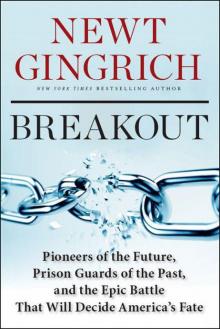 Breakout: Pioneers of the Future, Prison Guards of the Past, and the Epic Battle That Will Decide America's Fate
Breakout: Pioneers of the Future, Prison Guards of the Past, and the Epic Battle That Will Decide America's Fate Pearl Harbour and Days of Infamy
Pearl Harbour and Days of Infamy Pearl Harbour - A novel of December 8th
Pearl Harbour - A novel of December 8th Understanding Trump
Understanding Trump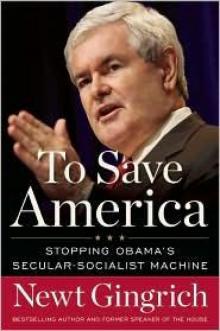 To Save America: Abolishing Obama's Socialist State and Restoring Our Unique American Way
To Save America: Abolishing Obama's Socialist State and Restoring Our Unique American Way